- What is Coconut Substrate?
- Benefits of Coconut Substrate
- How Coconut Substrate Supports Seedling Growth
- Advantages of Using Coconut Substrate in Rooting Plants
- 1. Sustainability
- 2. Excellent Water Retention
- 3. Good Drainage
- 4. Natural pH Balance
- 5. Pest and Disease Resistant
- 6. Longevity
- Environmentally Friendly Aspects of Coconut Substrate
- 1. Renewable Resource
- 2. Reduced Soil Erosion
- 3. Minimal Environmental Impact
- 4. Efficient Water Usage
- 5. Biodegradable and Recyclable
- 6. Low Carbon Footprint
- 7. Support for Sustainable Agriculture
- How to Use Coconut Substrate for Seedling Growth
- 1. Prepare the Coconut Substrate
- 2. Fill Seedling Trays or Pots with Coconut Substrate
- 3. Plant Seeds or Seedlings
- 4. Watering and Maintenance
- 5. Transplanting
- Tips for Using Coconut Substrate for Rooting Plants
- “Question-Answer”
- How does coconut substrate help in seedling growth?
- Is coconut substrate better than traditional soil for seedling growth?
- Can coconut substrate be used for rooting plants?
- Why is coconut substrate considered an eco-friendly solution for seedling growth?
- What are the benefits of using coconut substrate for seedling growth?
- How should coconut substrate be prepared for use in seedling growth?
- Can coconut substrate be reused for multiple cycles of seedling growth?
- “Video” How to use cocopeat for growing plants – part 1
When it comes to finding a sustainable alternative for seedling growth and the rooting of plants, coconut substrate emerges as a top choice. Made from the husk of coconuts, this natural material offers numerous benefits for both the environment and plant health.
Coconut substrate, also known as coco coir, is a byproduct of the coconut industry. The husks of coconuts, which were previously discarded as waste, are now being repurposed into a valuable resource. This makes coconut substrate an eco-friendly option that helps reduce waste and promote sustainability.
One of the key advantages of using coconut substrate is its excellent water retention capacity. The fibers within the substrate are capable of holding moisture several times their own weight, ensuring that plants have a steady supply of water and nutrients. This not only reduces the need for frequent watering but also prevents water wastage.
Additionally, coconut substrate offers
optimal aeration and drainage
properties. Its porous structure allows for the free flow of air, preventing waterlogging and root rot. This promotes healthy root development and prevents the accumulation of harmful pathogens. Furthermore, coconut substrate is naturally sterile, reducing the risk of pests and diseases.
Coconut substrate is also a sustainable alternative to traditional peat-based substrates. Peat extraction contributes to the destruction of carbon-rich ecosystems, making it an unsustainable choice. In contrast, coconut substrate is sourced from a renewable and abundant resource, making it a more environmentally friendly option.
In conclusion, coconut substrate offers a range of benefits that make it an eco-friendly solution for seedling growth and rooting plants. Its water retention capacity, aeration, and drainage properties, as well as its sustainability, make it a superior choice to traditional substrates. By using coconut substrate, individuals can support the environment while also promoting healthier plant growth.
What is Coconut Substrate?
Coconut substrate, also known as coir or coconut coir, is a natural and organic growing medium that is derived from the husk of coconuts. It has gained popularity in recent years as an eco-friendly alternative to traditional peat moss for seedling growth and rooting plants.
Coconut substrate is primarily made up of coir fibers, which are the woody part of the coconut husk. These fibers are extracted from the husk and processed into a substrate that is ready to use for gardening purposes. The processing typically involves washing, drying, and compressing the fibers into different forms such as blocks, pellets, or loose fibers.
One of the main advantages of using coconut substrate is its sustainability. The coir fibers used to make the substrate are a byproduct of the coconut industry and would otherwise go to waste. By using coir as a growing medium, gardeners are able to reduce their environmental impact and contribute to the circular economy.
In addition to its environmental benefits, coconut substrate also offers several advantages for plant growth. It has excellent water retention capabilities, allowing plants to remain hydrated for longer periods of time. At the same time, it also provides good drainage to prevent waterlogging and root rot.
Coconut substrate is also known for its ability to promote root development. The coir fibers create a loose and airy structure that allows for easy root penetration and expansion. This leads to healthier and more robust roots, which in turn, supports overall plant growth and productivity.
Furthermore, coconut substrate is naturally free from pathogens, pests, and weed seeds, making it a safe and clean growing medium for plants. It is also pH neutral, which means it does not affect the acidity or alkalinity of the soil, making it suitable for a wide range of plants.
The versatility of coconut substrate makes it suitable for a variety of gardening applications. It can be used for starting seeds, growing seedlings, rooting cuttings, and container gardening. It can be mixed with other amendments, such as compost or perlite, to create a customized growing mix that meets the specific needs of different plants.
In conclusion, coconut substrate is a sustainable and eco-friendly solution for seedling growth and rooting plants. Its natural properties, such as water retention, root development, and pathogen-free composition, make it a valuable alternative to traditional growing mediums. Whether you are a home gardener or a commercial grower, coconut substrate can provide a healthy and productive environment for your plants.
Benefits of Coconut Substrate
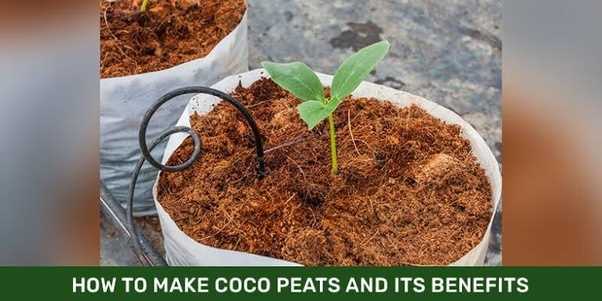
- Environmentally Friendly: Using coconut substrate as a growing medium is a sustainable and eco-friendly choice. It is made from the outer husk of coconuts, which is a byproduct of the coconut industry. By using this substrate, you are helping to reduce waste and promote a more sustainable agricultural practice.
- Excellent Water Retention: Coconut substrate has excellent water retention properties. It can hold moisture for extended periods, ensuring that plants receive a steady supply of water. This is especially beneficial for seedlings and young plants, as it helps prevent drying out and promotes healthy root development.
- Good Aeration: Coconut substrate also has good aeration properties. It provides a sufficient supply of oxygen to the plant’s roots, allowing them to breathe and facilitating the uptake of essential nutrients. Adequate aeration is crucial for plant growth and development.
- Rich in Nutrients: Coconut substrate is naturally rich in nutrients such as potassium, phosphorus, and magnesium. These nutrients are essential for plant growth and development. By using coconut substrate, you are providing your plants with a natural and organic source of these nutrients, promoting healthy and robust plant growth.
- Long-Lasting: Coconut substrate is known for its durability and longevity. It retains its structure and properties for an extended period, making it a cost-effective choice in the long run. This means you can reuse coconut substrate multiple times, reducing waste and saving money.
- Low pH Levels: Coconut substrate has naturally low pH levels, making it suitable for a wide range of plants. Many plants prefer slightly acidic soil conditions, and coconut substrate provides an ideal growing medium for them.
How Coconut Substrate Supports Seedling Growth
Coconut substrate, also known as coir or coconut husk, has gained popularity as an eco-friendly alternative for seedling growth and rooting plants. It is made from the fibrous material found between the hard inner shell and the outer husk of coconuts.
1. Excellent water retention:
Coconut substrate has the ability to hold a significant amount of water while still maintaining good drainage. This is beneficial for seedling growth as it ensures that the roots have access to an adequate water supply, preventing the seedlings from becoming waterlogged or drying out.
2. Nutrient-rich:
Coconut substrate naturally contains essential plant nutrients such as potassium, phosphorus, and magnesium. These nutrients are released slowly over time, providing a consistent source of nourishment for seedlings as they establish their roots and grow.
3. pH neutral:
One of the advantages of using coconut substrate is that it has a pH level close to neutral. This means that it does not significantly affect the acidity or alkalinity of the soil, making it suitable for a wide range of plants. Seedlings are able to grow in an environment with a balanced pH, which promotes overall healthy development.
4. Weed suppression:
Coconut substrate can help suppress the growth of weeds, creating a cleaner and more controlled environment for seedling growth. By reducing competition for resources, it allows the seedlings to thrive and establish strong roots without the interference of unwanted plants.
5. Sustainable and renewable:
Coconut substrate is a sustainable and renewable resource. Coconuts are harvested without damaging the tree, and the husks are processed to produce the substrate. This makes it an eco-friendly alternative to other substrates that may be derived from non-renewable resources.
Overall, coconut substrate provides an ideal environment for seedling growth by offering excellent water retention, nutrient-rich properties, a neutral pH, weed suppression, and a sustainable sourcing method. Using coconut substrate not only supports healthy seedling growth but also contributes to environmentally friendly gardening practices.
Advantages of Using Coconut Substrate in Rooting Plants
Coconut substrate, also known as coir, has gained significant popularity as an eco-friendly solution for rooting plants. This natural material is made from the fibers found in the husk of coconuts and offers several advantages over traditional substrates.
1. Sustainability
Coconut substrate is an excellent choice for environmentally conscious gardeners. It is a renewable resource that is derived from the outer husk of coconuts, which would otherwise go to waste. By using coconut substrate, you are reducing the demand for other non-renewable resources.
2. Excellent Water Retention
One of the key advantages of coconut substrate is its ability to retain water. The fibers in coir can hold up to nine times their weight in water, ensuring that plants receive a consistent water supply. This is particularly beneficial during the rooting phase, as it promotes healthy root development.
3. Good Drainage
In addition to its water retention capabilities, coconut substrate also offers good drainage. The porous nature of the fibers allows excess water to flow through, preventing waterlogged roots and the risk of root rot. This ensures proper aeration and prevents suffocation of the root system.
4. Natural pH Balance
Coir has a neutral pH level, which makes it suitable for a wide range of plants. Unlike other substrates that may require adjustments to achieve the optimal pH for plant growth, coconut substrate provides a balanced environment that promotes healthy root development.
5. Pest and Disease Resistant
Coconut substrate has natural fungicidal properties, which can help to prevent the growth of harmful fungi and diseases in plant roots. Additionally, it is resistant to pests such as nematodes, which can cause damage to the root system. This makes coconut substrate a safe and sustainable alternative to chemical-based treatments.
6. Longevity
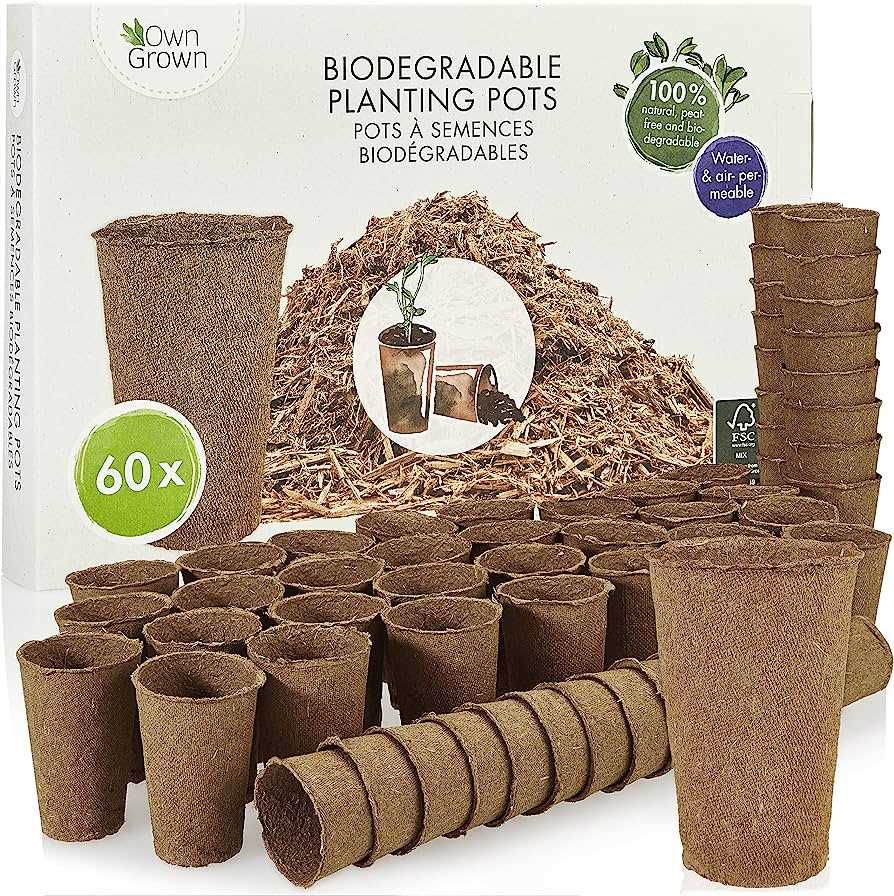
Coconut substrate has a long lifespan, allowing for multiple uses and reducing the need for frequent replacements. With proper care and maintenance, it can last for several years, making it a cost-effective choice for gardeners.
Overall, using coconut substrate in rooting plants offers numerous advantages. Its sustainability, water retention, drainage, pH balance, pest resistance, and longevity make it an excellent choice for environmentally friendly and successful plant rooting.
Environmentally Friendly Aspects of Coconut Substrate
The use of coconut substrate, also known as coconut coir or coconut peat, as a growing medium for seedlings and rooting plants offers several environmentally friendly aspects. These aspects make it a sustainable and eco-friendly option for gardeners and agriculture.
1. Renewable Resource

Coconut substrate is derived from the husk of coconuts, which is a waste product from the coconut industry. By using coconut substrate, we are utilizing a renewable resource that would otherwise be discarded.
2. Reduced Soil Erosion
Traditional soil-based growing mediums are susceptible to erosion, especially in areas with heavy rainfall or sloping land. Coconut substrate, on the other hand, has excellent water-holding capacity and retains moisture well. This helps to reduce soil erosion and the loss of valuable topsoil.
3. Minimal Environmental Impact
Coconut substrate is typically produced using sustainable farming practices that have minimal impact on the environment. It does not require the use of harmful chemicals or pesticides, making it a safer choice for both plants and the surrounding ecosystem.
4. Efficient Water Usage
Coconut substrate has a high water-holding capacity, which means it can retain water for longer periods. This reduces the frequency of watering, resulting in more efficient water usage. It also helps to conserve water, an increasingly important consideration in areas facing water scarcity.
5. Biodegradable and Recyclable
Coconut substrate is biodegradable and can be easily recycled or reused after its initial use. It can be composted to enrich garden soil or used as a mulching material. This reduces waste and contributes to a circular economy approach.
6. Low Carbon Footprint
The production and transportation of coconut substrate typically have a lower carbon footprint compared to other growing mediums. Coconuts are commonly grown in tropical regions, reducing the need for long-distance transportation. Additionally, the manufacturing process of coconut substrate requires less energy and resources compared to other substrates, further decreasing its carbon footprint.
7. Support for Sustainable Agriculture
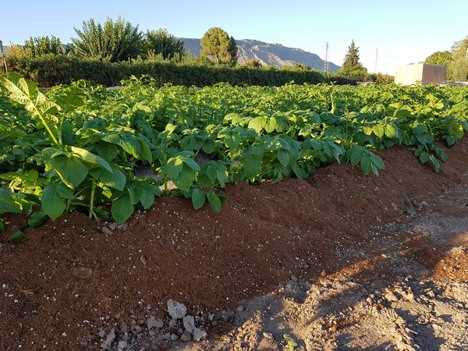
By choosing coconut substrate, consumers are supporting sustainable agriculture and the use of natural and biodegradable materials in horticulture and gardening practices. This promotes a greener approach to plant cultivation and helps to protect the environment.
In conclusion, coconut substrate offers numerous environmentally friendly aspects, including its renewable nature, reduced soil erosion, minimal environmental impact, efficient water usage, biodegradability, low carbon footprint, and support for sustainable agriculture. By using coconut substrate, we can grow plants in a more eco-friendly and sustainable manner.
How to Use Coconut Substrate for Seedling Growth
1. Prepare the Coconut Substrate
Before using coconut substrate for seedling growth, it is important to prepare the substrate properly. First, ensure that the coconut substrate is clean and free from any contaminants. Rinse it thoroughly with clean water to remove any dust or particles.
Next, it is recommended to soak the coconut substrate in water overnight. This will help to rehydrate the substrate and improve its moisture retention properties. After soaking, drain the excess water from the substrate.
2. Fill Seedling Trays or Pots with Coconut Substrate
Once the coconut substrate is prepared, fill seedling trays or pots with the substrate. Make sure to distribute it evenly, leaving some space at the top for planting the seeds or seedlings.
It is important to note that coconut substrate has a high water holding capacity, so avoid overfilling the trays or pots to prevent waterlogged conditions that may affect seedling growth.
3. Plant Seeds or Seedlings
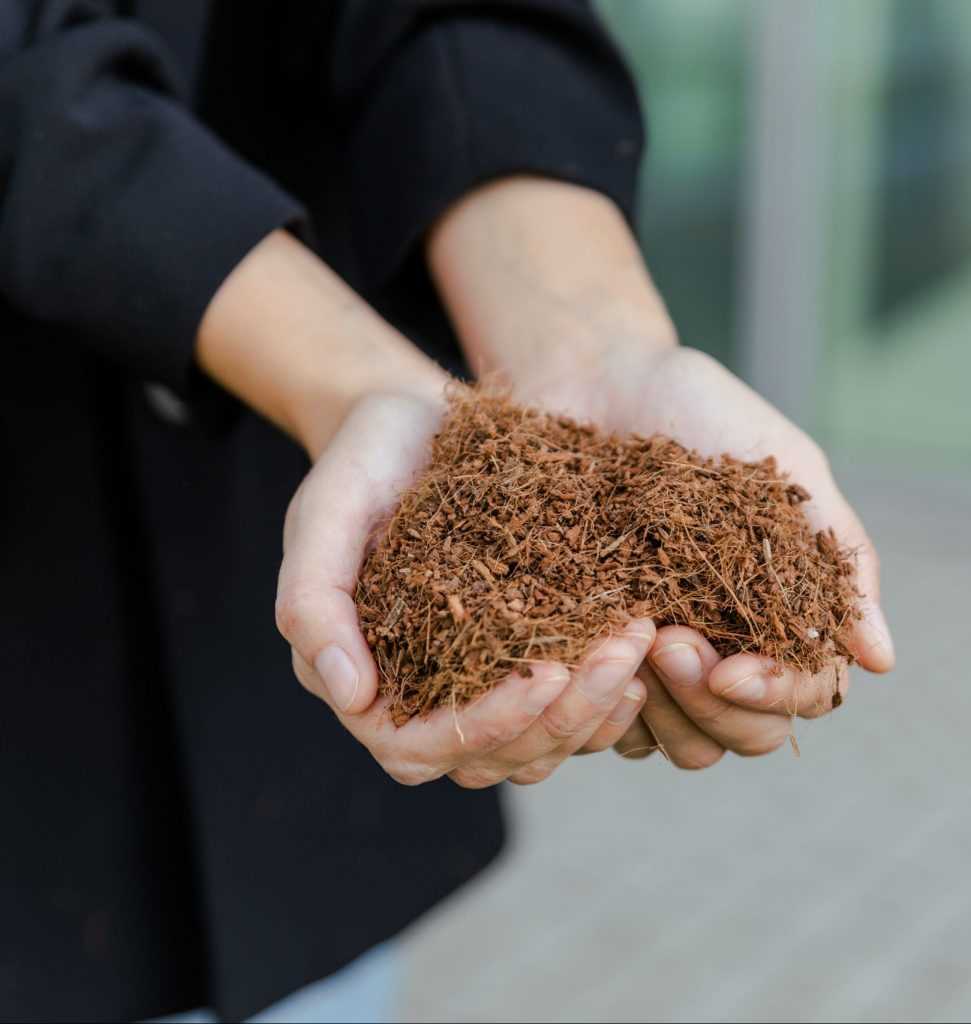
After filling the trays or pots with coconut substrate, it’s time to plant the seeds or seedlings. Follow the specific instructions for planting each type of seed or seedling.
Make sure to gently press the seeds or seedlings into the coconut substrate, ensuring good contact between the roots and the substrate. This will help the roots to establish and grow properly.
4. Watering and Maintenance
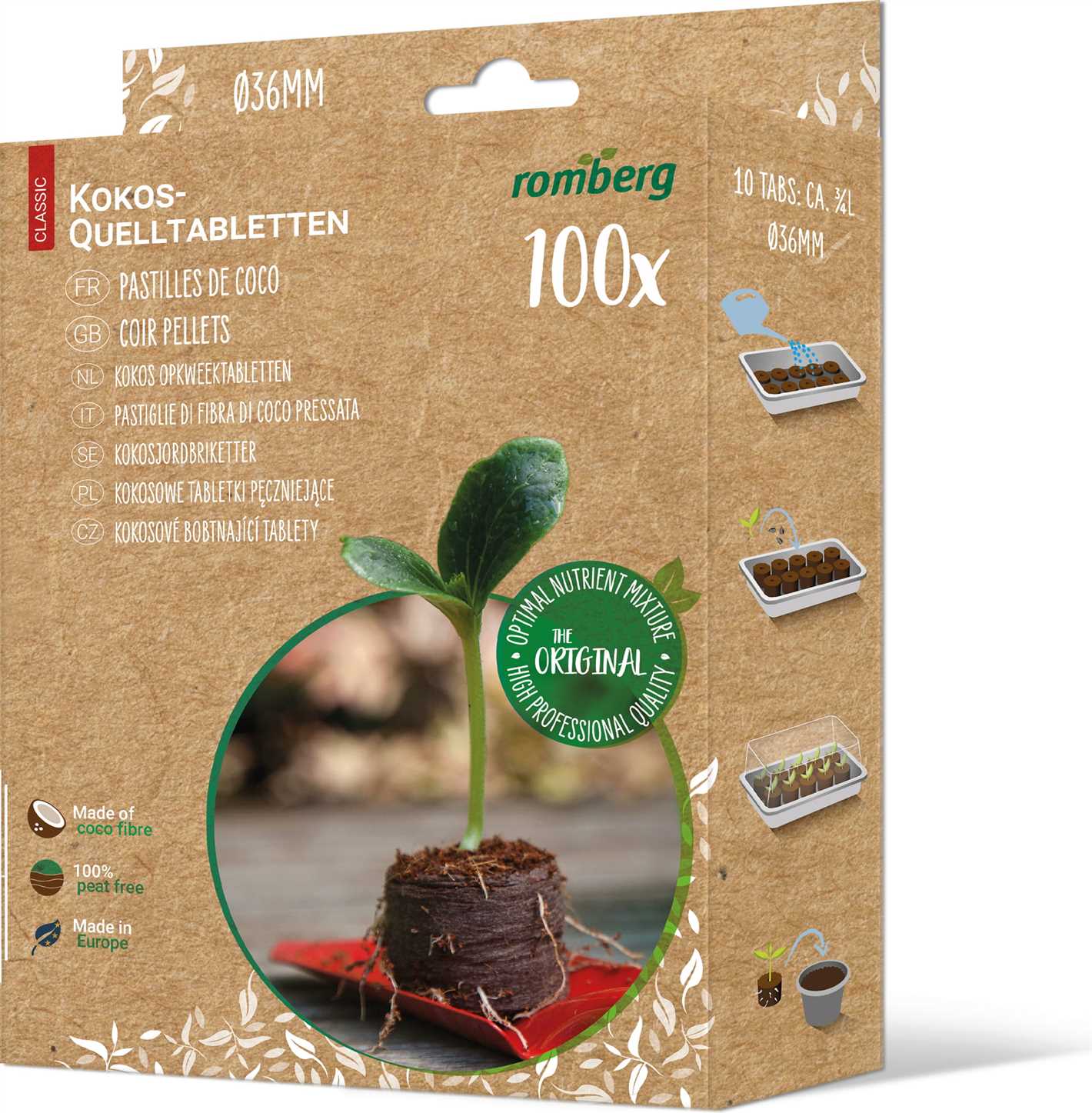
After planting, water the coconut substrate well, allowing the water to evenly distribute throughout the substrate. It is important to maintain a consistent level of moisture in the substrate, as coconut substrate can help retain moisture for longer periods. However, be careful not to overwater, as this can lead to waterlogging and root rot.
Monitor the moisture level regularly and water as needed. Additionally, keep an eye out for any signs of nutrient deficiencies or pest problems and take appropriate measures to address them.
5. Transplanting
Once the seedlings have grown and are ready to be transplanted, gently remove them from the coconut substrate, taking care not to damage the roots. Transplant them into larger pots or directly into the garden, ensuring they are planted in a suitable growing medium.
If transplanting to another coconut substrate-filled container, follow the same process as mentioned above.
By following these steps, you can effectively use coconut substrate for seedling growth and promote healthy root development and overall plant growth.
Tips for Using Coconut Substrate for Rooting Plants
- Choose high-quality coconut substrate: When selecting coconut substrate for rooting plants, look for a high-quality product that is free from contaminants and has undergone proper processing.
- Soak the coconut substrate: Before using the coconut substrate for rooting plants, it is important to soak it in water to rehydrate it. This will help ensure that the substrate is properly moistened and ready for the plants.
- Provide optimal drainage: Coconut substrate tends to retain water, so it is important to provide proper drainage for the plants. This can be achieved by adding perlite or sand to the substrate to improve drainage.
- Monitor moisture levels: Coconut substrate should be kept consistently moist, but not waterlogged. Regularly check the moisture levels of the substrate and water as needed to maintain the proper balance.
- Use appropriate containers: When rooting plants in coconut substrate, choose containers that have drainage holes to allow excess water to escape. This will prevent water from pooling at the bottom and potentially causing root rot.
- Ensure proper lighting: While coconut substrate provides a suitable growth medium for rooting plants, proper lighting is still essential. Place the plants in an area where they can receive adequate sunlight or provide artificial light if necessary.
- Transplant with care: Once the plants have rooted in the coconut substrate, they can be transplanted into larger pots or into the ground. Take care when transplanting to avoid damaging the delicate roots.
“Question-Answer”
How does coconut substrate help in seedling growth?
Coconut substrate provides a favorable environment for seedling growth due to its high water holding capacity and good aeration. It retains moisture while also allowing excess water to drain, preventing waterlogging. Additionally, coconut substrate has natural root-promoting properties that encourage healthy root development in seedlings.
Is coconut substrate better than traditional soil for seedling growth?
Yes, coconut substrate is considered to be better than traditional soil for seedling growth due to its numerous advantages. It has excellent water retention capabilities, good aeration, and natural root-promoting properties. Coconut substrate also has a neutral pH, which prevents nutrient imbalances and promotes healthy plant growth. Furthermore, it is resistant to pests and diseases, making it a more sustainable and eco-friendly option for seedling growth.
Can coconut substrate be used for rooting plants?
Yes, coconut substrate is an effective medium for rooting plants. Its high water holding capacity ensures the availability of moisture to the cuttings, which is essential for root development. Coconut substrate also provides support to the cuttings, allowing them to establish roots and grow into healthy plants. Moreover, the natural root-promoting properties of coconut substrate encourage faster and more robust root growth in the rooting process.
Why is coconut substrate considered an eco-friendly solution for seedling growth?
Coconut substrate is considered an eco-friendly solution for seedling growth due to several reasons. Firstly, it is made from the byproducts of the coconut industry, thus utilizing a waste material that would otherwise be discarded. Secondly, coconut substrate is a sustainable resource as coconuts are a renewable crop. Additionally, coconut substrate is biodegradable, reducing environmental impact after use. Furthermore, its resistance to pests and diseases minimizes the need for chemical pesticides and fertilizers, making it an environmentally friendly choice.
What are the benefits of using coconut substrate for seedling growth?
Using coconut substrate for seedling growth offers several benefits. Firstly, its high water holding capacity ensures the availability of moisture to the seeds or seedlings, promoting healthy growth. Secondly, coconut substrate provides good aeration to the roots, preventing waterlogging and root rot. It also has a neutral pH, preventing nutrient imbalances. Additionally, coconut substrate has natural root-promoting properties that stimulate root growth. Moreover, it is resistant to pests and diseases, reducing the need for chemical treatments. Overall, coconut substrate promotes healthy and sustainable seedling growth.
How should coconut substrate be prepared for use in seedling growth?
To prepare coconut substrate for seedling growth, it should be soaked in water overnight to remove excess salt and other impurities. After soaking, the substrate should be drained well to remove excess water. The coconut substrate can then be used directly or mixed with other components, such as perlite or vermiculite, to improve aeration and drainage. Before planting the seeds or seedlings, the coconut substrate should be fluffed to create a loose and airy texture, ensuring optimal conditions for seedling growth.
Can coconut substrate be reused for multiple cycles of seedling growth?
Yes, coconut substrate can be reused for multiple cycles of seedling growth with proper care. After each use, the substrate should be sterilized to kill any pathogens or pests. This can be done by steaming the substrate or treating it with a fungicide. Once sterilized, the coconut substrate can be reused by following the same preparation process as before. Reusing coconut substrate not only saves costs but also reduces waste, making it a sustainable option for seedling production.







